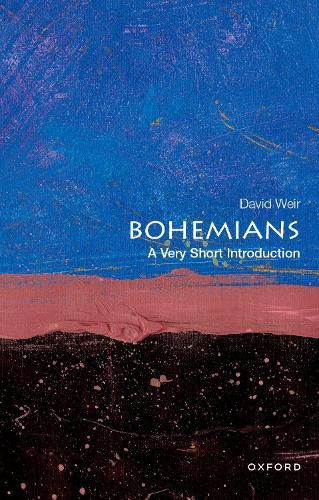Readings Newsletter
Become a Readings Member to make your shopping experience even easier.
Sign in or sign up for free!
You’re not far away from qualifying for FREE standard shipping within Australia
You’ve qualified for FREE standard shipping within Australia
The cart is loading…






The Romantic myth of Bohemia originated in the early nineteenth century as a way of describing the new conditions faced by artists and writers when the previous system of aristocratic patronage collapsed in the wake of the Age of Revolution. Without the patron system, the artist was free to move around, to seek an audience wherever fortune beckoned. This marketing model likening the artist’s vagabond career to the gypsy life helps to explain part of the bohemian myth, but not all of it. Most bohemians have scant interest in commercial gain and are not so itinerant after all, confining their movements to down-market urban neighbourhoods where the rent is cheap and the morals are loose. This Very Short Introduction traces the myth of Bohemia through its various fictional manifestations, from Henry Murger’s novel Scenes of Bohemian Life (1851) and Giacomo Puccini’s opera La Boheme (1896) to Aki Kaurismaki’s film La vie de Boheme (1992), and Jonathan Larson’s musical Rent (1996). It goes on to examine the history of different bohemian communities, including those in the Latin Quarter of Paris, the Schwabing section of Munich, and the Greenwich Village neighborhood of New York. David Weir also considers the politics of Bohemia and traces the careers of the artists Gustave Courbet and Pablo Picasso and the great chanteuses Yvette Guilbert, Frehel, and Edith Piaf in the Montmartre neighborhood of Paris, where a rich tradition of popular culture indebted to Bohemia also developed. Weir concludes with a discussion of the legacy of Bohemia today as something outworn and dying, an exhausted tradition that somehow continues.
$9.00 standard shipping within Australia
FREE standard shipping within Australia for orders over $100.00
Express & International shipping calculated at checkout
The Romantic myth of Bohemia originated in the early nineteenth century as a way of describing the new conditions faced by artists and writers when the previous system of aristocratic patronage collapsed in the wake of the Age of Revolution. Without the patron system, the artist was free to move around, to seek an audience wherever fortune beckoned. This marketing model likening the artist’s vagabond career to the gypsy life helps to explain part of the bohemian myth, but not all of it. Most bohemians have scant interest in commercial gain and are not so itinerant after all, confining their movements to down-market urban neighbourhoods where the rent is cheap and the morals are loose. This Very Short Introduction traces the myth of Bohemia through its various fictional manifestations, from Henry Murger’s novel Scenes of Bohemian Life (1851) and Giacomo Puccini’s opera La Boheme (1896) to Aki Kaurismaki’s film La vie de Boheme (1992), and Jonathan Larson’s musical Rent (1996). It goes on to examine the history of different bohemian communities, including those in the Latin Quarter of Paris, the Schwabing section of Munich, and the Greenwich Village neighborhood of New York. David Weir also considers the politics of Bohemia and traces the careers of the artists Gustave Courbet and Pablo Picasso and the great chanteuses Yvette Guilbert, Frehel, and Edith Piaf in the Montmartre neighborhood of Paris, where a rich tradition of popular culture indebted to Bohemia also developed. Weir concludes with a discussion of the legacy of Bohemia today as something outworn and dying, an exhausted tradition that somehow continues.